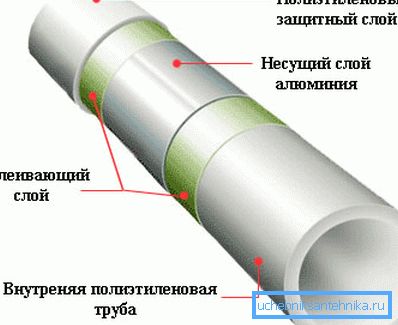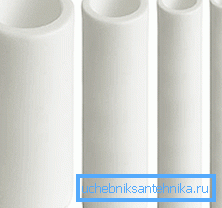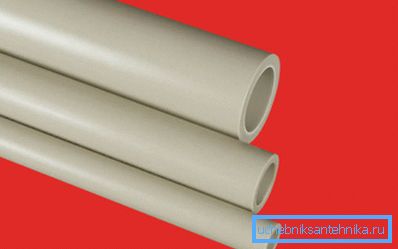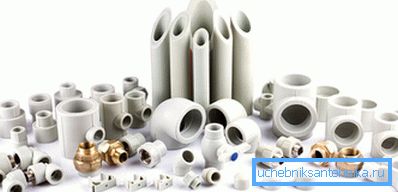Pn pipe - properties, benefits and applications
Scientific progress does not stand still, offering consumers new building materials that are more durable, easier to install and operate. We are talking about polypropylene pipes, everywhere replacing steel in the organization of heating, hot (cold) water supply and drainage.

Kinds
When you decide to use polypropylene pipes when installing systems for various purposes, pay attention to their marking. This is due to the various technical properties of these products, models of which may differ significantly among themselves.
For example, to reduce the cost of installation, options have been developed that can work only with cold water and are not used in networks with high pressure of the working environment.
Tip: when choosing polypropylene pipes, it is desirable to immediately determine their operating conditions so that these data help to select the appropriate product version.

Consider below some of them, with the figure in the marking corresponds to the maximum working pressure of the fluid, which they can withstand:
| PN 10 |
|
| PN 16 |
|
| PN 20 | These propylene products can be installed in heating systems, as they are able to withstand a carrier temperature of 95? С. In addition, the figure 20 says that this can be done not only in a private house for an autonomous heat supply, but also for central heating of apartment buildings. |
| PN 25 | Consider the technical characteristics of polypropylene pipe PN25:
|

Tip: Experts recommend the use of reinforced pipes PN 25 for hot water and heating.
Another important issue is the correct selection of fittings for plastic pipes of a certain type for each type of product. Otherwise, they may become a weak link in the system being created. Also, the characteristic of polypropylene products must match the valves used with them.
Benefits
Consider the positive properties of the material, so that he was able to replace the traditional steel pipes:
- Non-corrosive, which can be considered the main advantage of products. The lifetime of polypropylene systems significantly exceeds the metal.

- The smooth inner surface does not allow salt and lime to make deposits on them. The cross section of the pipeline does not change over its entire life.
- The cost of the material is significantly lower than those of steel, especially of copper or stainless steel..
- Operation does not require large expenses, for example, they do not need painting, and repair of damaged areas is done with simple equipment.
The connection of pipes is carried out in various ways, including using diffusion welding, which makes it possible to obtain permanent connections. At the same time, their strength will not be inferior to the quality of the main product. The process of installing pipes of different diameters is not complicated and can be performed almost without preparation with their own hands at home.

The next positive point is the minimum thermal conductivity of polypropylene. This makes it possible to use it for the transportation of heat transfer fluids of various types with minimal losses of their energy. The temperature at the inlet and outlet practically does not change its value.
Where apply
Due to the universality of the polypropylene pipeline, as well as its technical characteristics, it can be used in networks of various purposes.

Consider below, for what tasks they can be used:
- The instruction allows the transportation of chemically active and aggressive liquids. Polypropylene does not react to most chemical compounds.
- Transportation of compressed air with pressure up to 25 bar is allowed, which is quite enough for the organization of most technological processes that require pneumatic energy.
- Irrigation and land improvement due to the low cost of products.
- Installation of drainage systems.
- Traditional - heating and water supply.

Production technology
The low cost of products made of polypropylene is associated with a simple technology of their manufacture. The source material is specially prepared polypropylene copolymer granules in which ethylene chains are present.

The latter allows the pipes to have a high temperature stability, which is very important for the transport of coolants. These communications can briefly withstand temperatures up to 110? С.
Conclusion
From the article, you learned why polypropylene pipelines have replaced steel, what is their advantage and where they can be used. The use of such systems allowed to “establish and forget” about them, thanks to their long term use. When choosing fittings, it is necessary to take into account the material and diameter of products. The video in this article will help you find additional information on this topic.